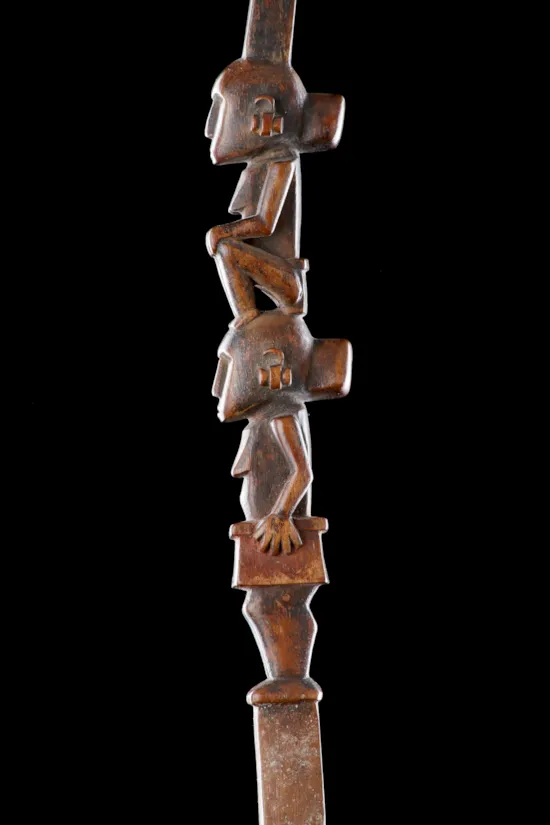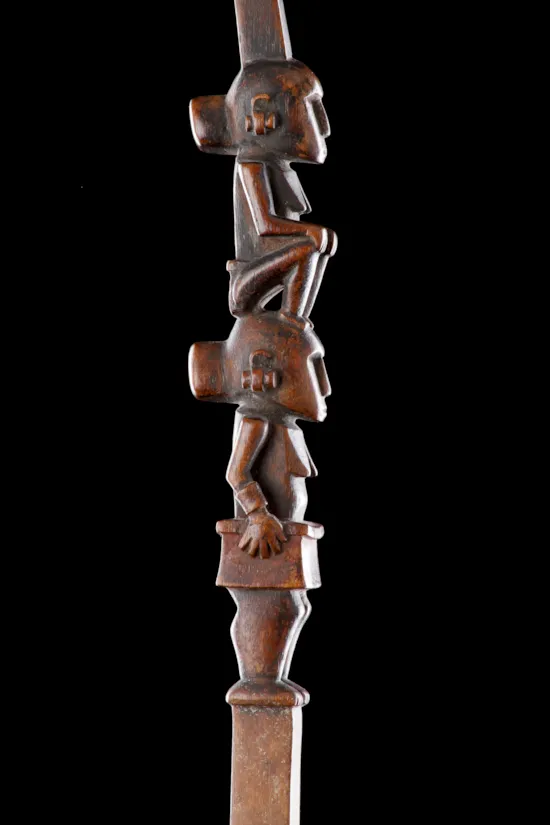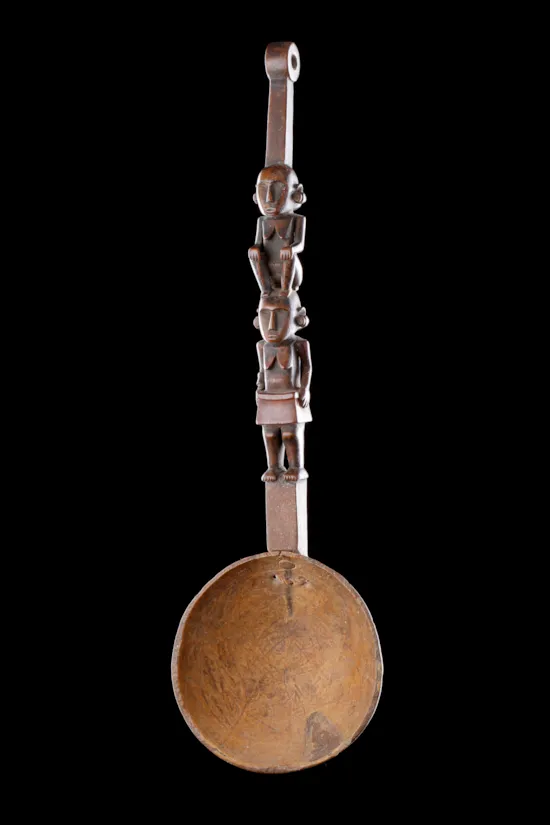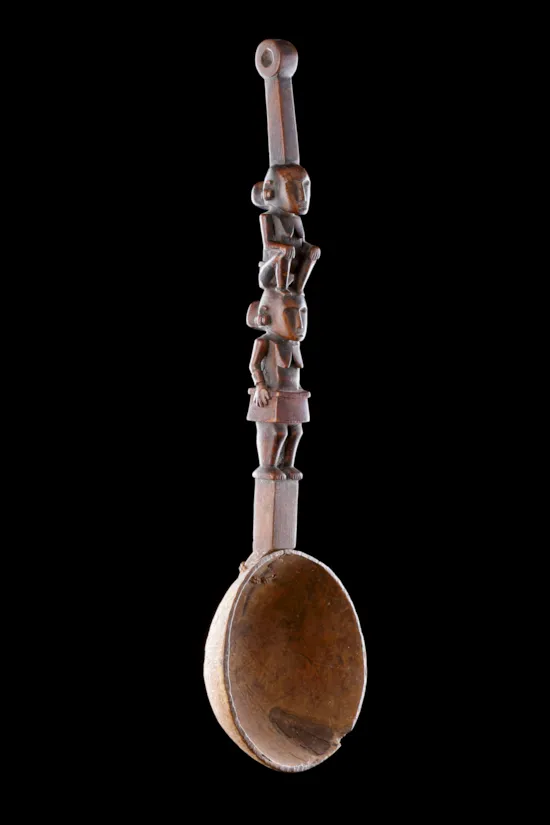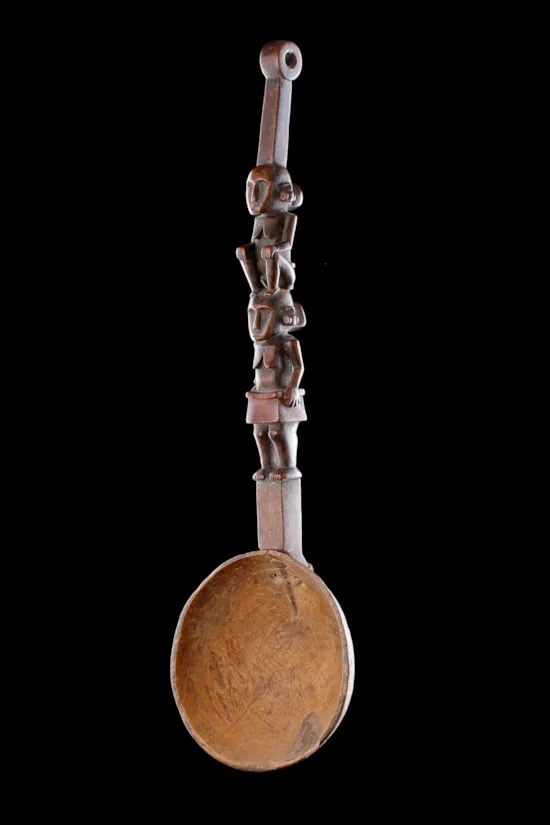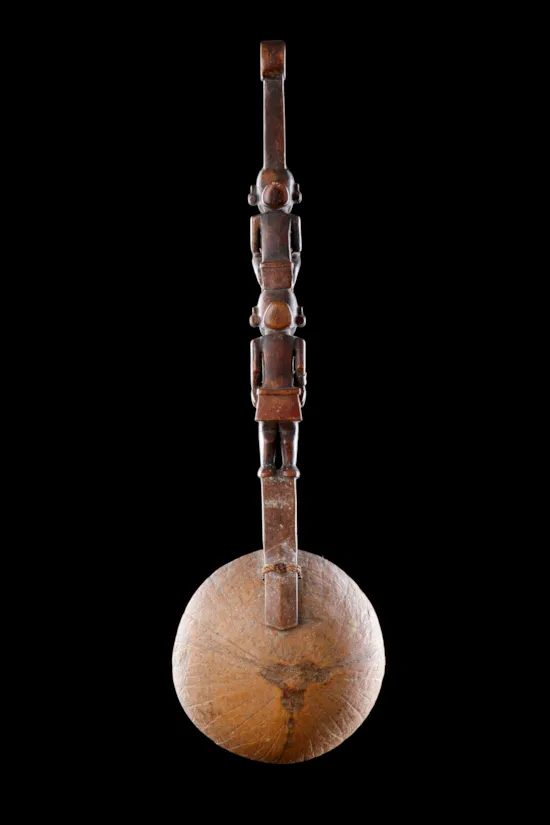A Rare Figurative Ladle from Palau
A Rare Figurative Ladle from Palau the Long Wooded Handle with a Coconut Bowl Attached by its Original Sennet
The long handle carved with a double figure a seated female above a standing female both wearing traditional ‘cheriut skirts’
A suspension lug towhich a sennet cord would have been attached
19th Century
Size: 37cm long - 14½ ins long
The long handle carved with a double figure a seated female above a standing female both wearing traditional ‘cheriut skirts’
A suspension lug towhich a sennet cord would have been attached
19th Century
Size: 37cm long - 14½ ins long
A Rare Figurative Ladle from Palau the Long Wooded Handle with a Coconut Bowl Attached by its Original Sennet
The long handle carved with a double figure a seated female above a standing female both wearing traditional ‘cheriut skirts’
A suspension lug towhich a sennet cord would have been attached
19th Century
Size: 37cm long - 14½ ins long
The long handle carved with a double figure a seated female above a standing female both wearing traditional ‘cheriut skirts’
A suspension lug towhich a sennet cord would have been attached
19th Century
Size: 37cm long - 14½ ins long
These rare figurative ladles from Palau were used by high ranking families to serve a ceremonial fish or turtle soup. This one is a particular fine example depicting a pair of female ancestral figures. The delicately carved figures are rendered with the traditional ‘top knot’ hairstyle, ear-spools and the colourful fibre skirts or ‘cheriut’ worn by the Paluan women of rank during the 18th and 19th centuries. The distinctive skirts were constructed from the bast fibre of local trees, and were then brightly coloured with either orange turmeric or a mixture of red ochre soil and coconut oil, referred to as ‘choriich’. Traces of this red pigment can be found on the skirts of the figures on the ladle. The carved armband depicted on the standing figure represents a ‘derual’ made from stacked rings of turtle shell, also an indicator of wealth and rank in Palauan culture.
Captain Levisohn, Germany
Collected in the 1870’s while the Captain of the ‘Susanne’, Levisohn travelled widely throughout the German territories of Micronesia and often sought pieces for German dealers, including J.F.G Umlauff of Hamburg
Max Ackermann, 1887 - 1975, a German artist who established an artists colony with his friend and colleague Otto Dix in the early 1950’s at Hornstead near Lake Constanz
Ex Private German collection
Ex Private UK collection
cf A similar example can be found in Linden-Musuem, Stuttgart, Germany
Collected in the 1870’s while the Captain of the ‘Susanne’, Levisohn travelled widely throughout the German territories of Micronesia and often sought pieces for German dealers, including J.F.G Umlauff of Hamburg
Max Ackermann, 1887 - 1975, a German artist who established an artists colony with his friend and colleague Otto Dix in the early 1950’s at Hornstead near Lake Constanz
Ex Private German collection
Ex Private UK collection
cf A similar example can be found in Linden-Musuem, Stuttgart, Germany
A Rare Figurative Ladle from Palau



